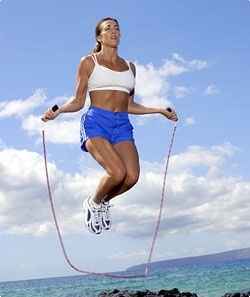(aka “The Zen Strength Holy Grail of Fitness”)
Are you overwhelmed and confused by the growing number of exercise options available these days? You have Crossfit, Yoga, Pilates, HIT, HIIT, Barre, TRX, Weights, P90X, MMA, 7-Minute Workout, Kettlebells, Tabata, Bodyweight, Isometric, Plyometric, Isotonic, Cardio, Jogging, Cycling, Swimming, and the list goes on…

The good news? You have plenty of options.
The bad news? You may not know what suits you best – and you don’t have a lot of free time.
I get it. You’re busy.
The problem is that you’ve tried a lot of these exercises; yet you want to find what works best for you. You’re not seeing the results you want without dedicating too much time and effort.
And let’s face it: you’re busy and you don’t have time to spend hours a week at the gym. You don’t have the time to try every workout program in the world.
You don’t even have time to research all of these different workouts. Is there even any science or evidence behind this stuff showing that it actually works?
What do you even want to get out of all these workouts?
You want to be healthy, live a long life, and look good naked.
You need a workout program that addresses your health and fitness goals. A fitness routine that fits your life and your schedule.
You want to gain strength, minimize fat, boost energy, lower stress, live longer, stay healthy and well (avoiding sickness and disease).
You want a workout that works for you.
So which ONE workout is best? Which ONE workout will help you get stronger, lose weight, calm you, boost longevity and make you more resilient?
All of them! That is, just choosing something is generally better than nothing at all. But you don’t want to just choose something at random.
Just do it.
You need to first and foremost choose something that you will actually do. You see, it may seem obvious, but if you don’t actually do the workouts and the exercises, you don’t get the benefit. In fact, in a study, people who did not exercise at all were at the highest risk of early death. So…
You can’t simply sign up for the classes. You can’t just pay for a gym membership and hope that these are going to give you results. You have to do them.
Okay, okay. You get it. You’ll do the workout!
The science to support it.
Furthermore, you want to choose the workouts that are backed by evidence / research / science and, if you’re busy like me, you want to get the benefits from exercise without spending a lot of time doing it.
If you want to get all of the benefits I listed above, you are going to need to choose a variety of workouts. You do like variety, right? You choose a variety because there’s not one single workout that will give you the best ROI for muscular endurance, aerobic capacity, maintenance of ideal ratios of strength and muscle mass (better than”toned”: think strength without bulk), cardiovascular fitness (for longevity), mitochondrial biogenesis (for energy), optimized fat burning, metabolic efficiency, blood sugar control, and stamina.
Here’s what you need to do to get all of these benefits…
1: Lift something heavy.
Whether you’re new to lifting weights or you’ve been lifting since you were a kid (or puberty, let’s say), the following protocol for weight and resistance training will likely be a challenge.
(If you don’t have access to weights or machines – or you want a simpler workout you can do anywhere, without the need for weights – check out how I’ve adopted the Nuero-Mass Workout as a great alternative for building muscle and strength.)
This protocol is based on Doug McGuff’s work and is explained in more detail in his book “Body by Science“. The entire workout takes only 12-20 minutes.
Here are the exercises:
- Seated row
- Chest press
- Pulldown
- Overhead press
- Leg press
After warming up with lighter weight, you’ll want to work up to the heaviest weight (about 80% of your maximum) that you can safely use to complete the following for each of the above exercises:
- Super-slow, controlled movement
- 30-60 seconds per repetition (that’s at least 15 seconds one way and 15 the other)
- Keep going until you absolutely must stop (about 1.5 to 2 minutes)
- Move to the next exercise
How often should you do this? Dr. McGuff says that on average, after full fatigue, our muscles need about 7 days to recover. Women tend to recover faster so, if you want to get stronger faster, you can probably get away with more frequent workouts.
2: Go hard, rest and repeat.
This is what you might call a HIIT workout. That’s High Intensity Interval Training. There are many different variations on this and here we will focus on what’s called Tabata because it’s been proven to improve muscle endurance while simultaneously increasing aerobic capacity. Two birds. One stone.
Here’s how to do it:
- 20 seconds as hard as you can
- 10 seconds rest
- Repeat for 4 minutes
That’s one Tabata session. The specific exercises you choose are up to you but here are some good options: burpees, mountain climbers, jumping jacks, squat thrusts, running, cycling, and rowing.
How often should you do this? Just 2 4-minute sessions per week for a total of 8 minutes per week.
3: Go far – and fast.
This is the longest of the workouts – both in terms of distance and time. It’s pure cardio and the goal here is to reach your VO2 max – the maximum amount of oxygen you can utilize. Here’s the protocol:
- 4 minutes as fast as you can (87-97% of your max heart rate)
- Recover fully (about 4 minutes)
- Repeat (for a total of 5)
The recommendation here is on a bike or running – and done every 2 weeks.
4: Move as fast as you can.
These are flat out sprints – going just as hard and as fast as you possibly can. This will help maximize your mitochondrial density meaning that you’ll have more energy to go faster and further. Here’s how it goes:
- 4 second sprint as hard as you can possibly go
- 20 seconds rest
- Repeat (for a total of 3)
Once again, the recommendation here is on a bike or running (my preference) – and done every 2 weeks.
You may notice that this may seem very similar to the Tabata workouts described above. That’s true and you are getting much of the same benefit. The difference here is that these sprints are focused on running or cycling and are also focused on going just as hard as you can throughout the entire exercise (whereas the 20 seconds with Tabata may not be possible to do – especially on your last few repetitions).
5: Do the magical 7-minute workout.
I mean, why not? Everyone else seems to be doing it, right? And there are hundreds of apps, videos, and articles out there telling you both how to do it and its benefits.
But, in case you live under a rock, here’s each exercise below – to be performed for 30 seconds with 10 seconds of rest in between exercises.
- Jumping Jacks
- Wall Sits
- Pushups
- Crunches
- Step-ups
- Squats
- Dips
- Planks
- Running in place with High Knees
- Lunges
- Pushups with Rotation
- Side Planks
Do this just once a week.
6: Just move.
By now it’s no secret: staying active helps to optimize fat burning, metabolic efficiency and blood sugar control. The protocol here is simple:
Before breakfast and after dinner, go for a 10-30 minute walk. Or you can do something indoors like yoga or even house cleaning. Just move.
That’s it. But, if you want extra credit (in terms of burning more fat and living longer), you can set a timer (like the Pomodoro technique) to ensure that you get up and move at least every 30 minutes.
7: Get outdoors.
Here you’re going to do a long period – more than 90 minutes – of medium-level activity to the point where you deplete your glycogen stores. This means that your body must then rely on fat for fuel.
Here’s what you can do:
- Road biking
- Mountain biking
- Hiking
- Backpacking
- Backcountry Skiing
How often? At least once a month.
Summary
That’s it; to simplify further:
- Heavy weights once a week
- Tabata twice a week
- VO2 max every 2 weeks
- Sprints every 2 weeks
- 7-minute workout once a week
- Walk before breakfast and after dinner
- Get outside once a month
Share Your Feedback
What do you think? Too easy? Too hard? Too much? Too little? What works for you?
